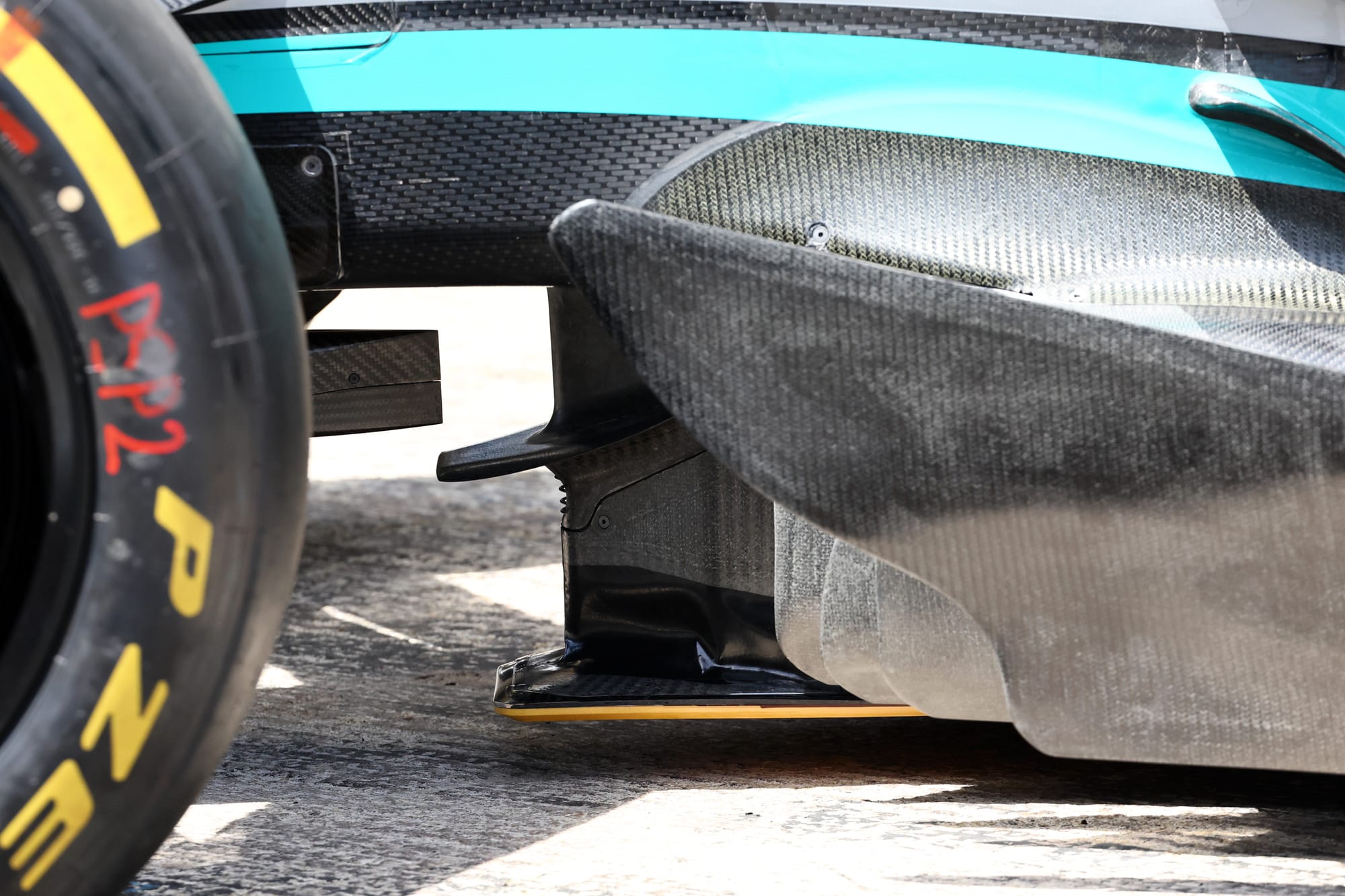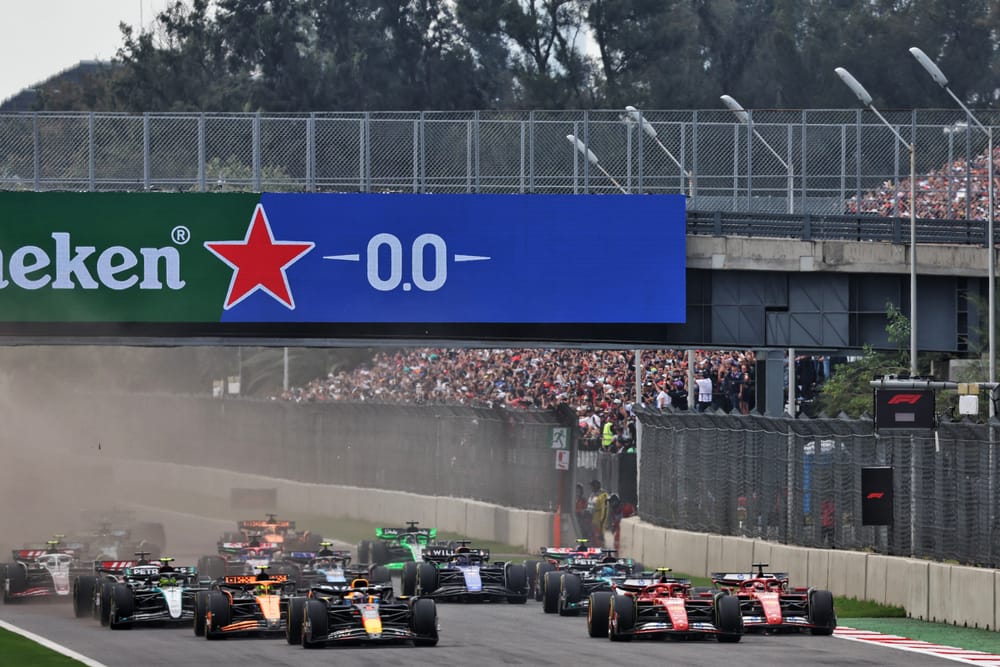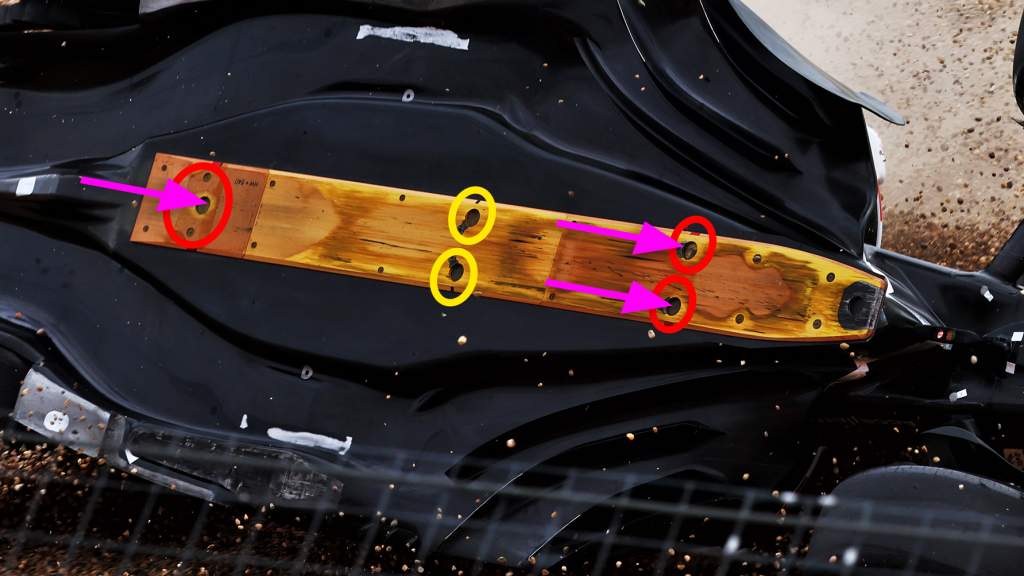Up Next

The FIA has issued a new technical directive clarifying the way in which skids may be attached to the floor, resulting in a number of Formula 1 teams making changes for this weekend’s Las Vegas Grand Prix.
The plank assembly under the floor consists of the plank itself but also skids, which help manage how much the plank is worn down by contact with the track surface, and mountings.
There are specific limitations on the skid material that may be used, covering where it can be placed and how much may be fitted in place of plank material.
The new technical directive, which was first reported by Germany’s Auto Motor und Sport, clarifies not only what is in the technical regulations but also tackles potential ambiguity in a previous TD addressing this area.
Some teams pushed back on the introduction of the new TD, arguing that it should be deferred to the end of the season. However, the FIA has pressed on given the TD clears up existing regulations and guidance.
Ferrari is among the teams which have made tweaks as a result, but Red Bull is also understood to have made minor alterations despite ultimately being supportive of the change.
At least half of the grid is believed to have taken action in response. This doesn’t necessarily mean the cars would have been considered illegal prior to this latest TD, something that could only have been tested if a protest were lodged, but the response suggests the move has had the desired effect.
The current ground-effect cars produce prodigious downforce when running close to the ground.

Being able to run low without running the risk of excess plank wear is therefore key to car performance.
The regulations stipulate that the underfloor plank has a thickness of 10mm (± 0.2mm) and that “a minimum thickness of 9mm will be accepted due to wear, and conformity to this provision will be checked at the peripheries of the designated holes”.
There are also limitations on floor flexibility, scrutineered using static load tests, in the regulations.
It is understood the relevant TD here is conceived to ensure that there is no opportunity to exploit ambiguity in the wording to allow a car to run lower than it otherwise would, through ingenious fasteners or other means, without falling foul of these rules.
If, and to what extent, this will impact the competitive order is unclear at this stage, although it is potentially a disadvantage for Ferrari, which is expected to be strong on the long straights and in the slow corners of Las Vegas, where running low on the bumpy track runs the risk of excess plank wear. Red Bull could perhaps take a small hit, although its apparent support for the TD suggests it sees it as a net gain.
All of that could be good news for McLaren if it wasn’t among those taking advantage.
However, given the changes are small it might not make any dramatic difference - although with margins so tight at the front it doesn’t take much of a swing in performance to make the difference between winning and losing.




